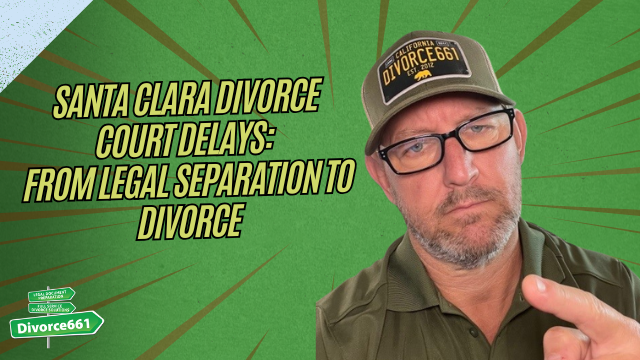👎 Santa Clara Divorce Court Delays: From Legal Separation to Divorce
Navigating the family court system can be challenging, especially when unexpected procedural hurdles cause delays. Recently, I worked with clients in Santa Clara who experienced firsthand the frustrating delays that can happen when trying to amend a legal separation case to a divorce. This situation sheds light on some important procedural nuances in Santa Clara’s divorce court that anyone going through a similar process should understand.
The Challenge: Amending Legal Separation to Divorce
My clients initially filed for legal separation without my assistance. Later, they decided to amend their case to a divorce. Naturally, we attempted to file an amended petition to switch the case from legal separation to divorce. However, the court rejected our amended petition, stating that instead of filing an amended petition alone, we needed to submit a stipulation.
This requirement is a critical procedural step that can easily be overlooked, especially if you are navigating the process without legal counsel. The court’s insistence on a stipulation meant that simply filing an amended petition was insufficient to move forward with the divorce.
Filing a Stipulation: What It Means and Why It Matters
A stipulation in family law is an agreement between the parties involved, laying out terms or procedural steps agreed upon by both sides. In this context, the court required a formal stipulation to approve changing the case status from legal separation to divorce.
Once we submitted the stipulation, the court took approximately 30 days to review and sign it. While this may seem like a routine administrative step, the delay effectively held up the entire case. The clients faced an extended wait time simply because of the procedural requirement and the court’s processing timeline.
Why Does This Delay Matter?
- Extended Court Time: For those eager to finalize their divorce and move forward, delays can be emotionally and financially taxing.
- Unanticipated Wait: Many people assume that amending a case is a straightforward process, but the court’s need for a stipulation adds an extra layer of complexity.
- Planning Impact: Delays can affect other aspects of life, such as financial planning, housing arrangements, and co-parenting decisions.
Lessons for Santa Clara Divorce Clients
If you are considering starting with a legal separation and then later want to convert that to a divorce, it is essential to be aware of the court’s procedural requirements. Here are some tips based on this experience:
- Consult an Attorney Early: Having legal guidance from the beginning can help avoid procedural pitfalls and unnecessary delays.
- Understand Court Requirements: Know that the court may require a stipulation or other formal agreements before approving case amendments.
- Prepare for Delays: Even when following all procedures correctly, court processing times can add weeks to your timeline.
- Stay Proactive: Promptly respond to court requests and file any required documents to minimize hold-ups.
Final Thoughts
While it might seem like a small administrative detail, the need to file a stipulation to amend a legal separation to divorce in Santa Clara can cause significant delays. Understanding these requirements ahead of time can save you frustration and help you better navigate the divorce process.
If you’re facing a similar situation or have questions about your divorce case in Santa Clara, it’s always best to consult with an experienced family law attorney who can guide you through the process efficiently.
Remember, the goal is to move forward with your life as smoothly as possible—and knowing the court’s procedures is a crucial step in that journey.




